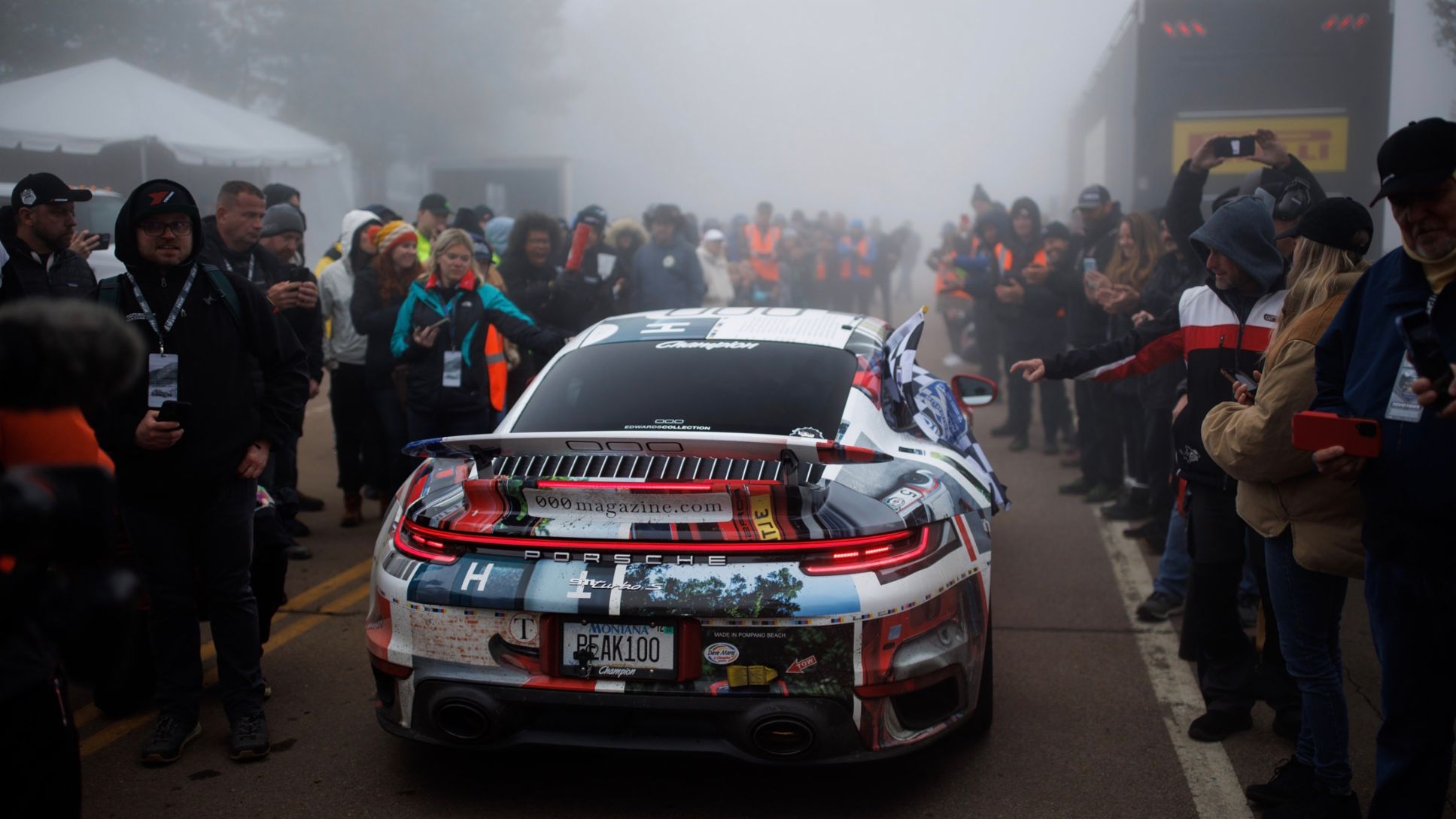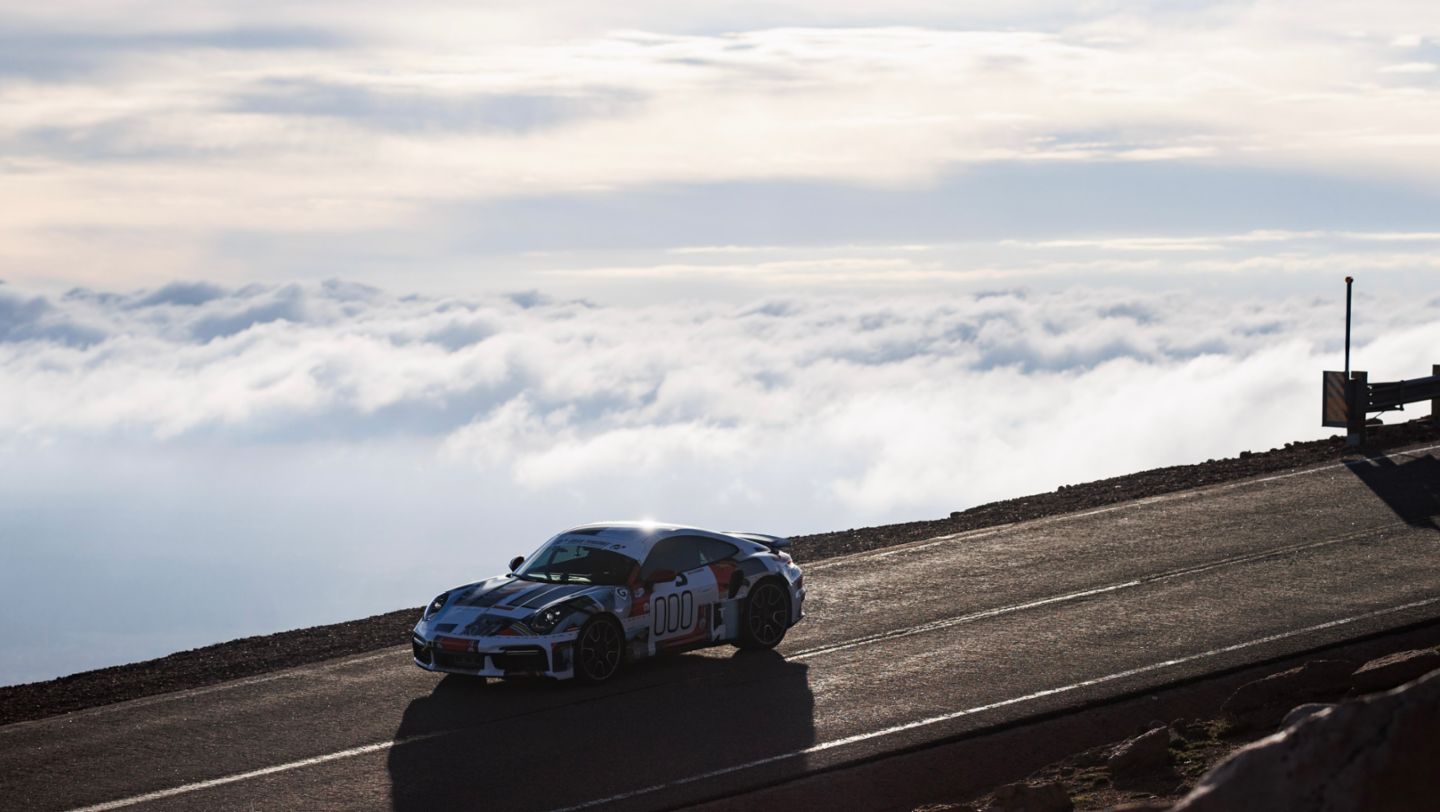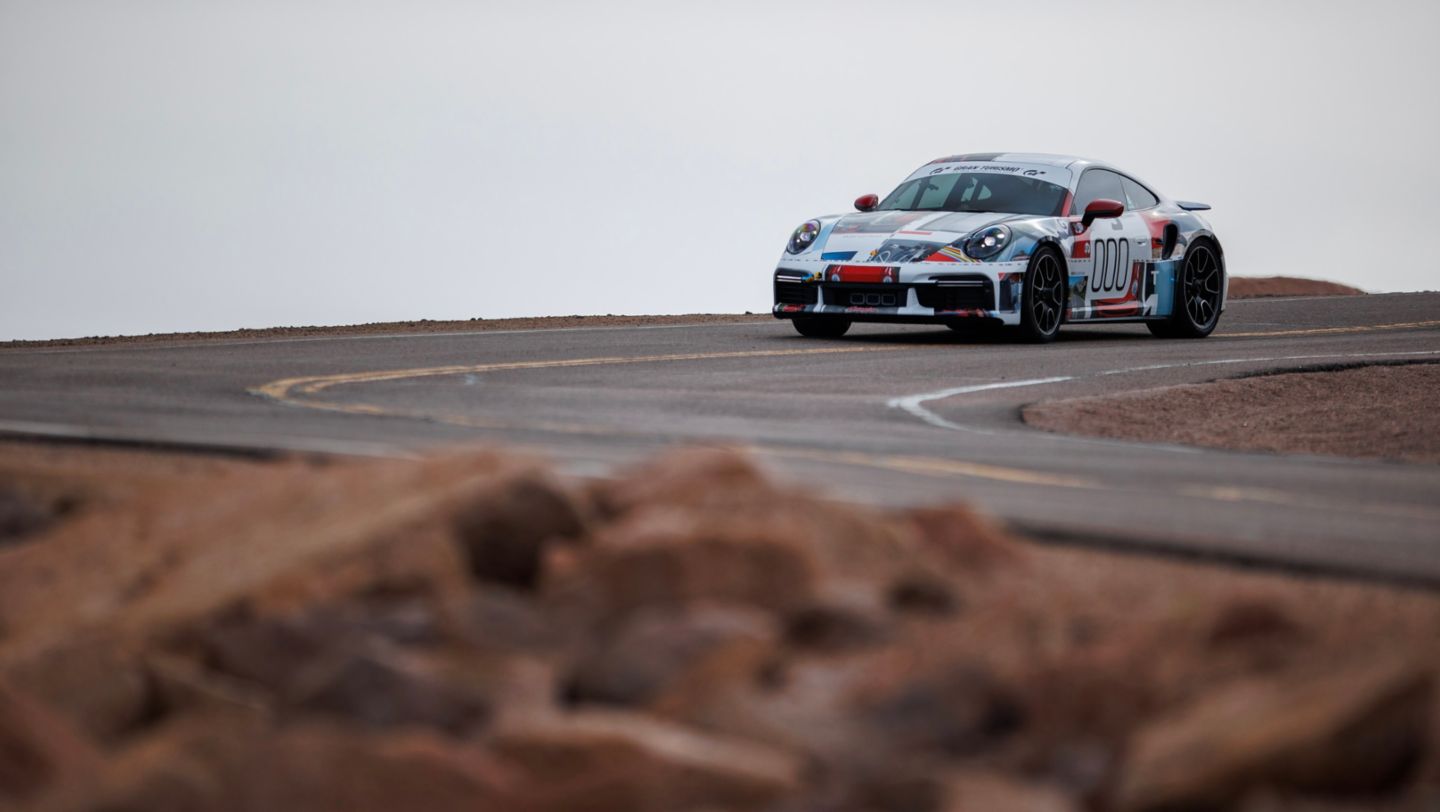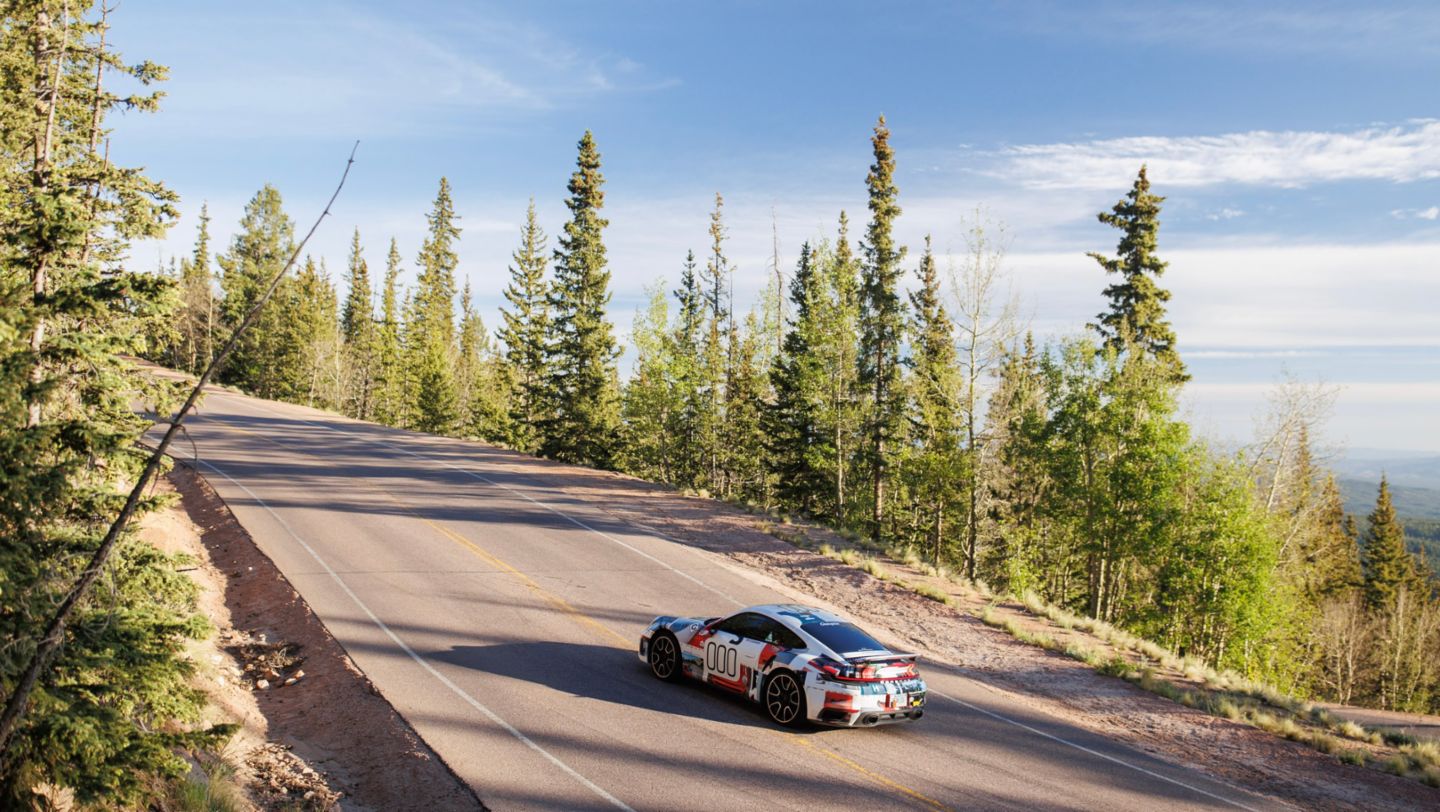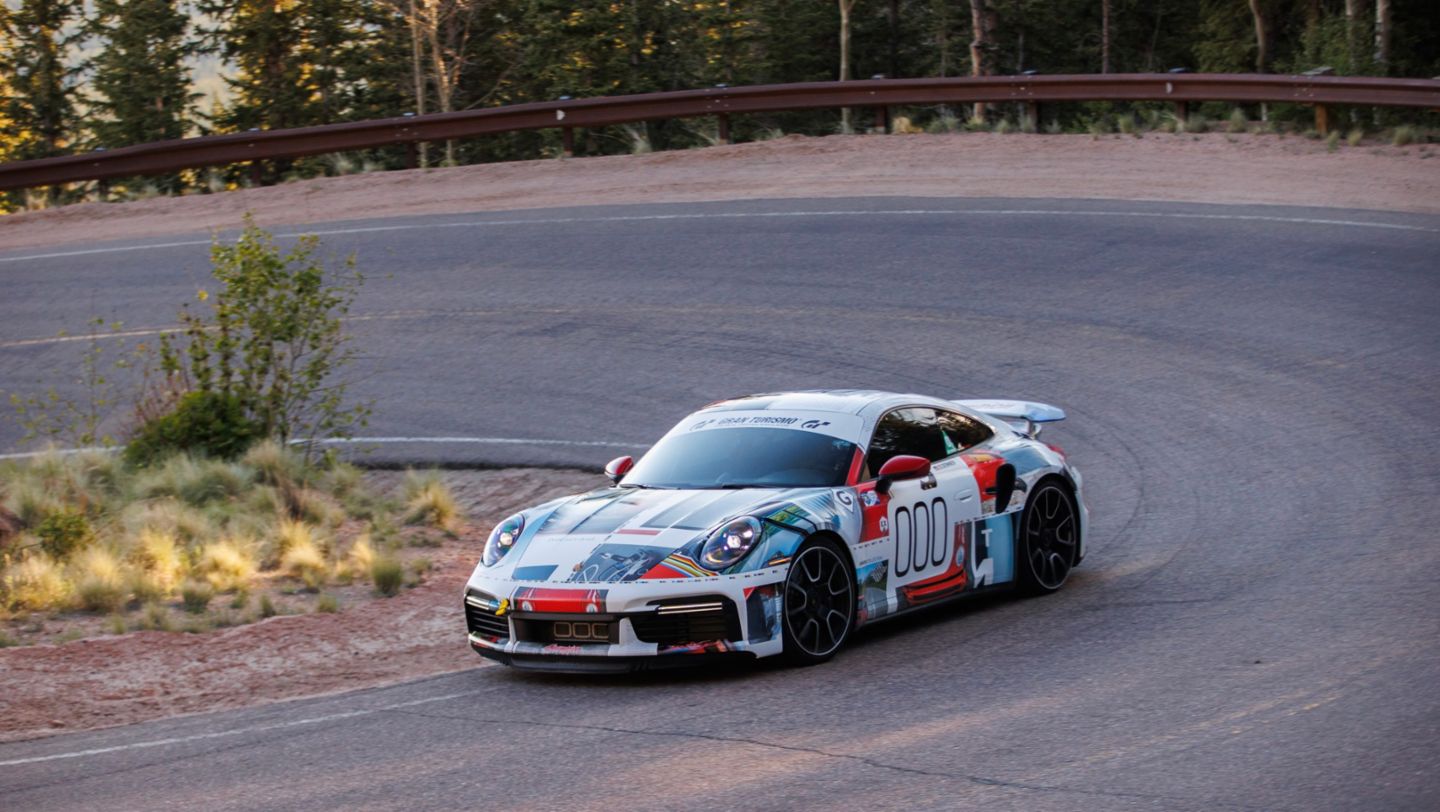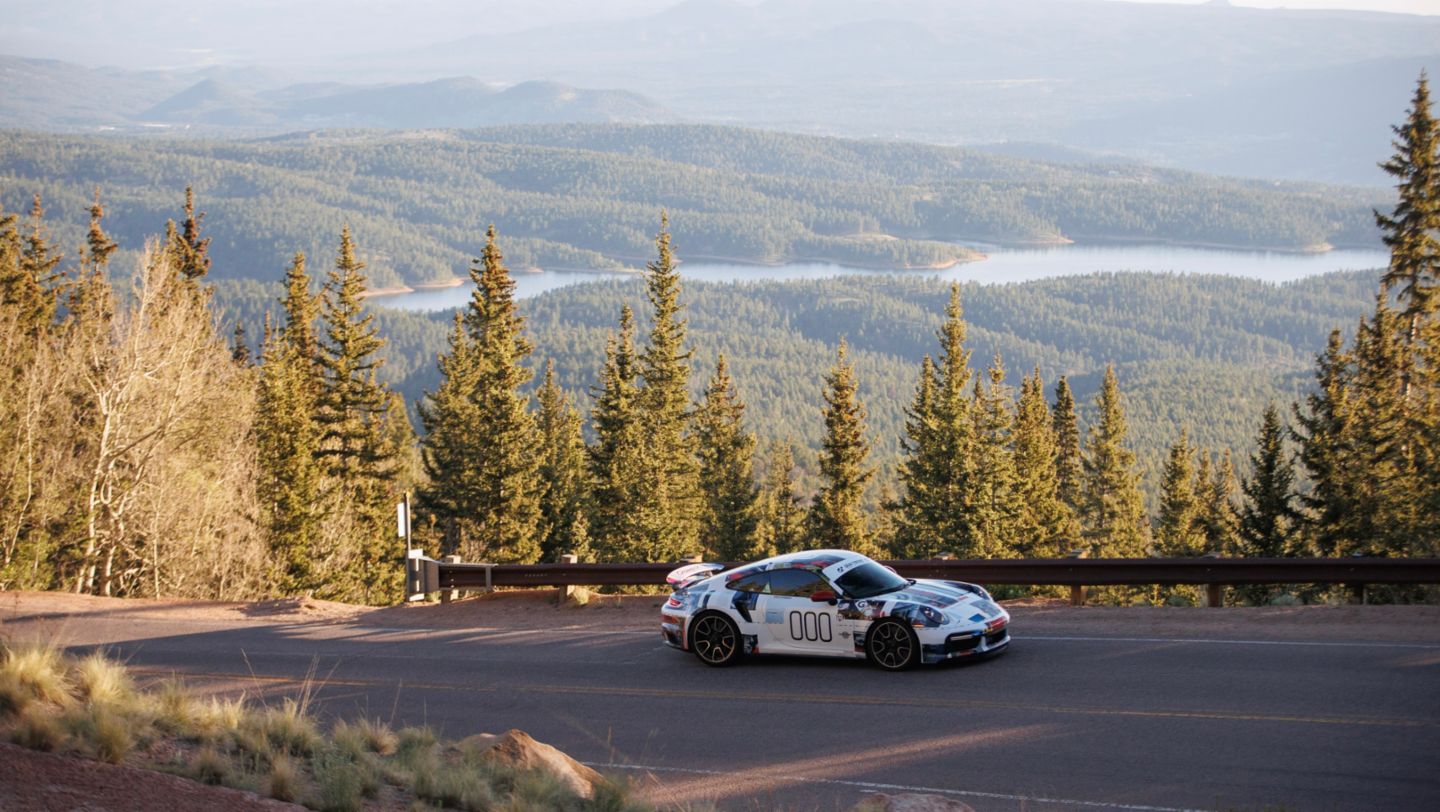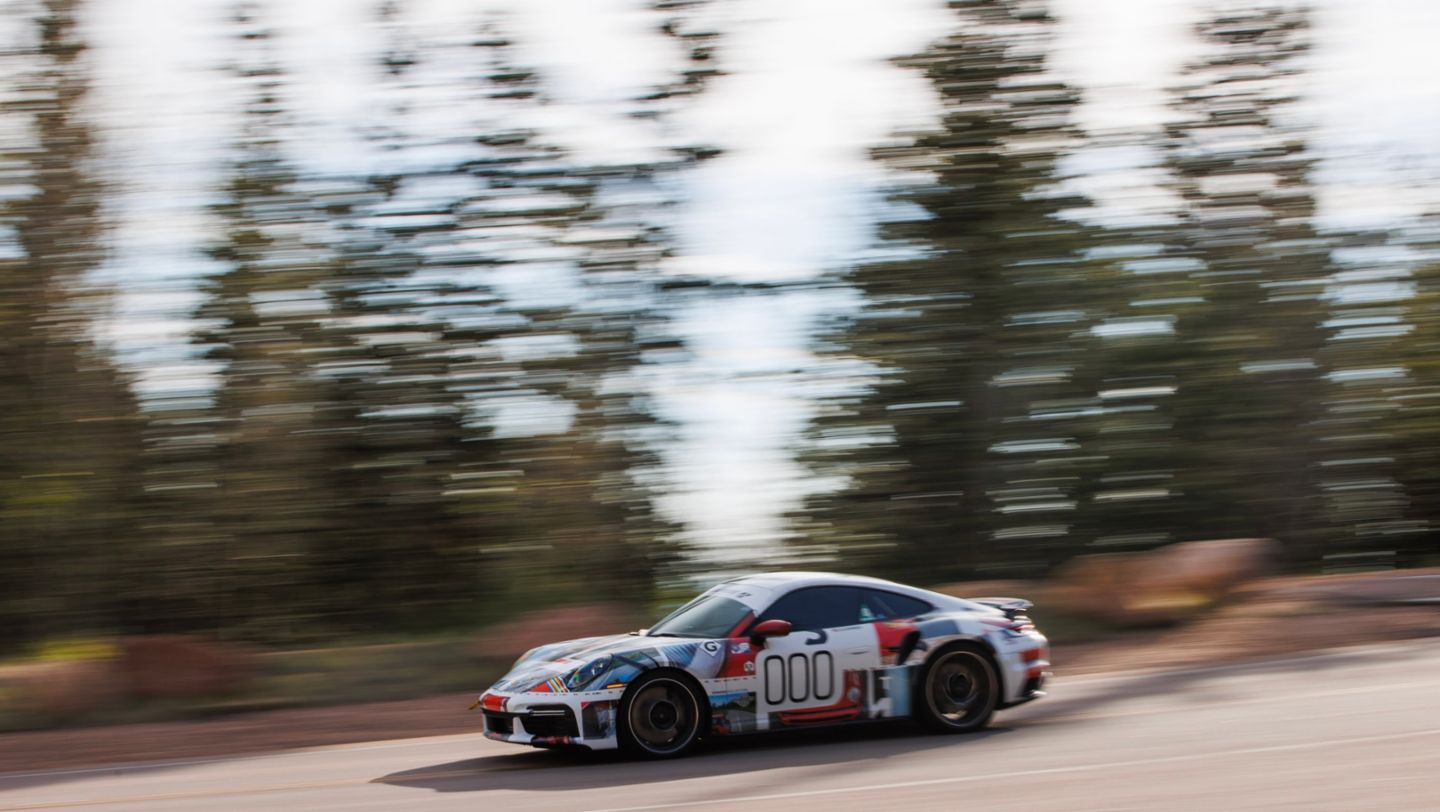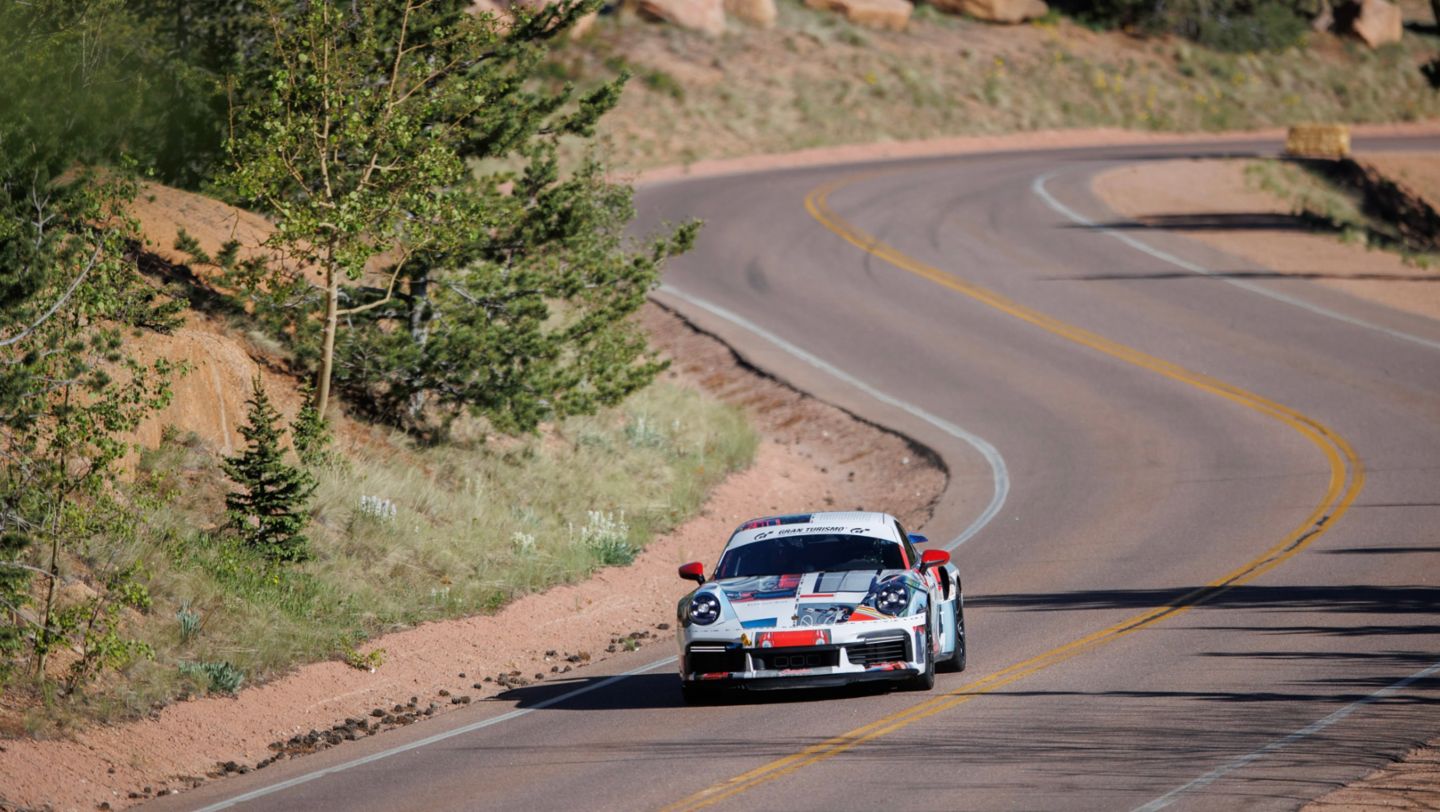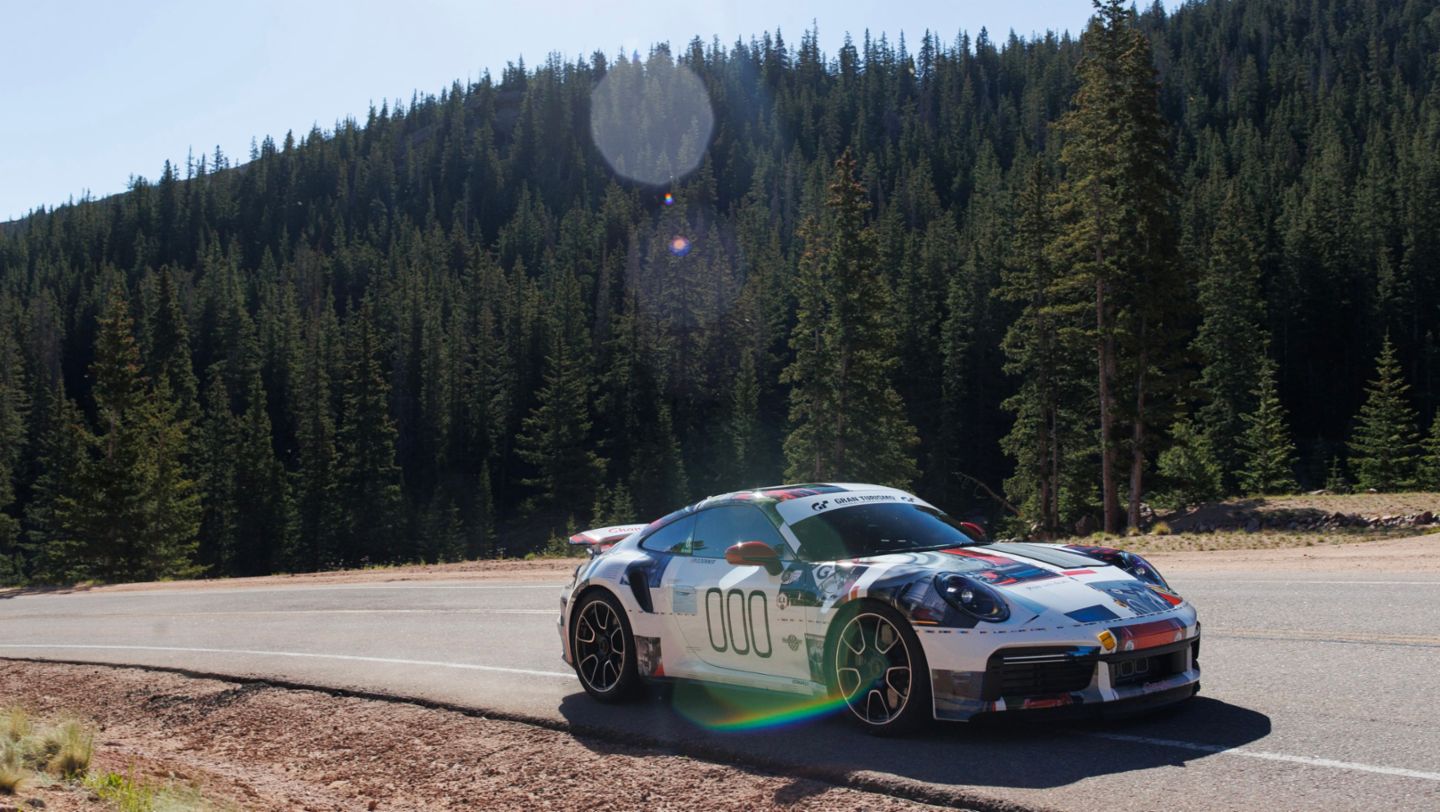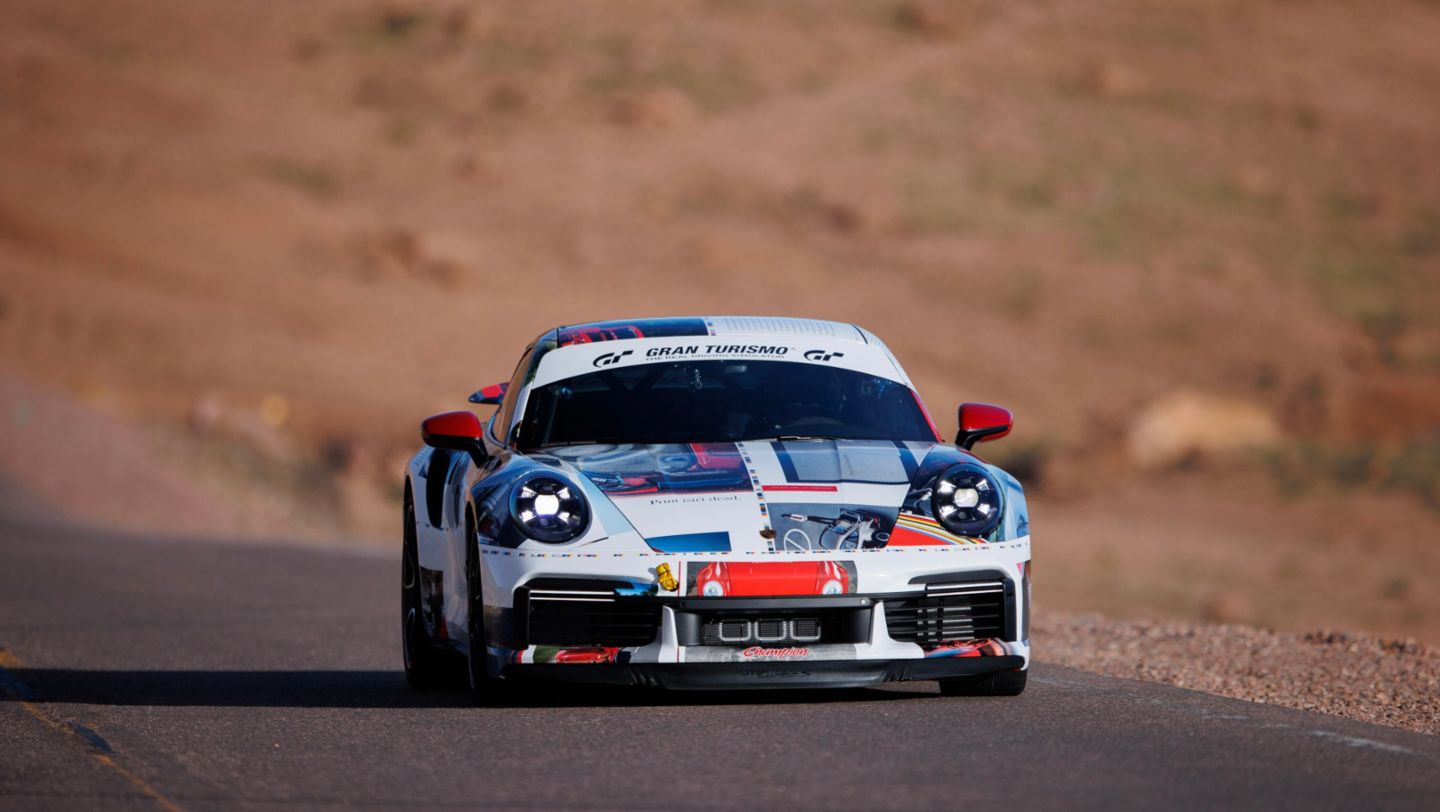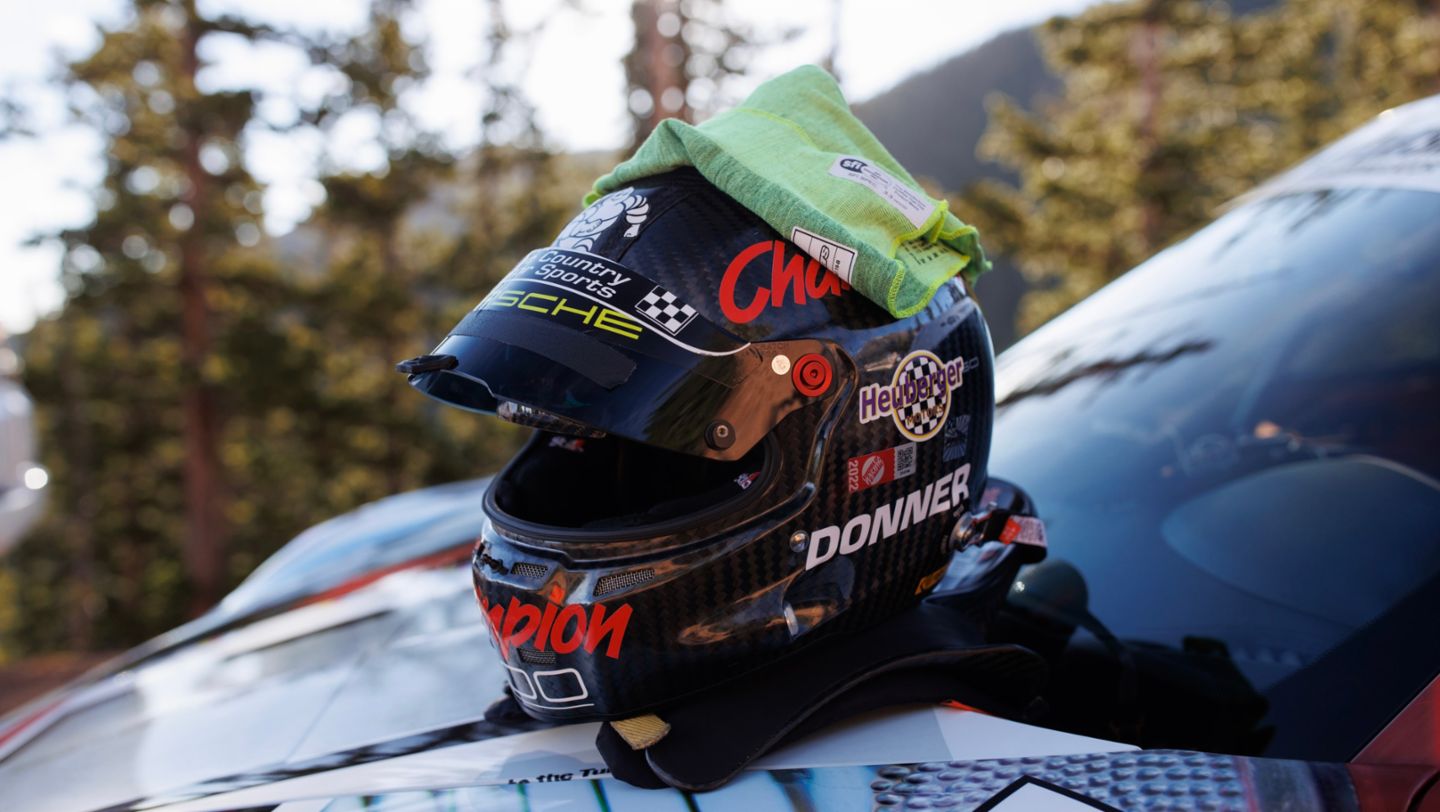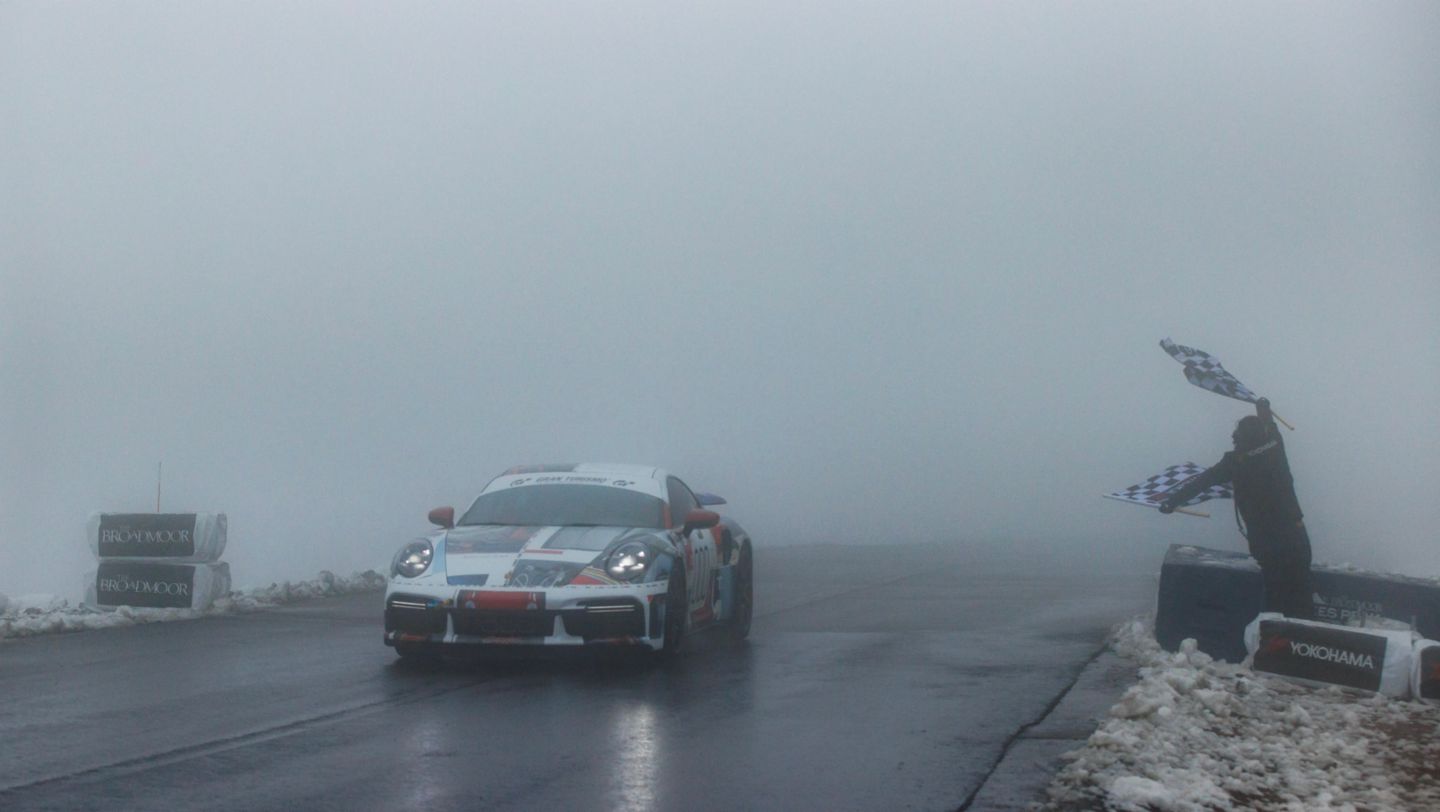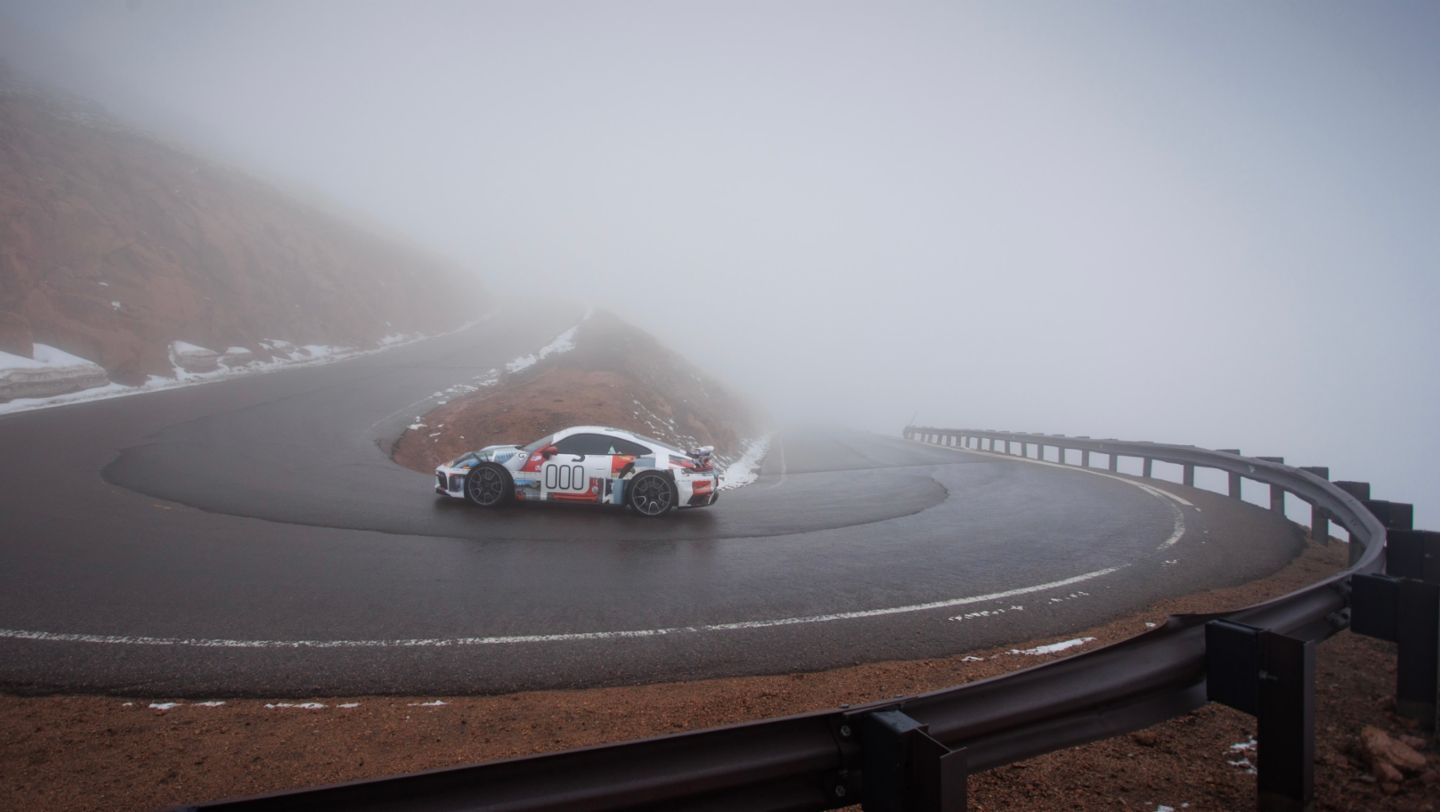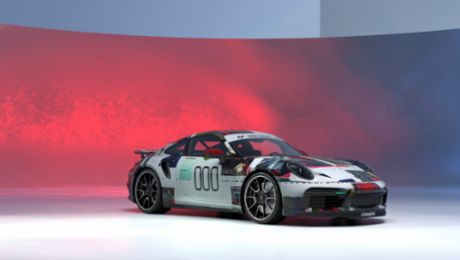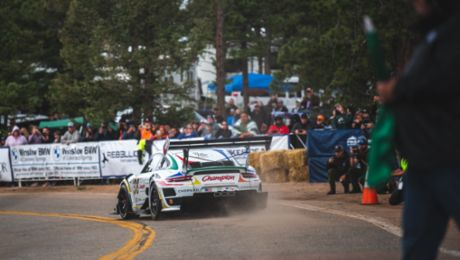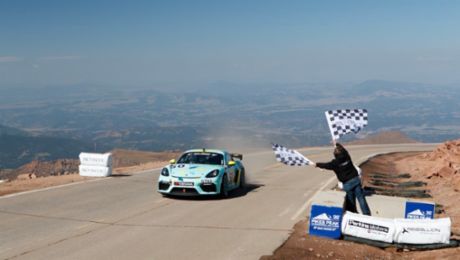When GT3 Cup racer David Donner, ‘000’ editor Pete Stout and Porsche collector Jim Edwards arrived at Pikes Peak in 2022, they had one common goal. Seven years earlier, Donner had set a production car record at Pikes Peak in the 991 generation 911 Turbo S, his time standing until 2019 when a Bentley Continental GT eclipsed it by just 8.4 seconds over the 20 kilometre course. The three men were determined to retake the crown for Porsche, and before them now sat Edward’s own 992-generation 911 Turbo S with the Lightweight package, newly acquired for this express purpose.
The Production Car class at Pikes Peak demands minimal modifications, all geared around safety rather than increased performance, and Stout had called upon the expert workshops of Champion Porsche in Florida to ready their Turbo S for competition. Seats, airbags, carpets and sound deadening were out, a roll cage, fire suppression system, single race seat and six-point harnesses were in. The car was allowed a free-flowing exhaust and ECU remap to cope with the extreme altitudes it would face, but beyond that had to remain entirely standard. No suspension, drivetrain or aerodynamic mods. It would even have to run on OEM wheels and road-legal tyres.
In the run up to race day, the car was performing faultlessly and the pundits were predicting that the Production Car record was sure to fall. “Even though this was a street car, it was flawless from the start and we didn’t have any issues in practise,” says Donner. “To be honest, it was surprising to me that the car was as quick as it was. It was only a few seconds off the race cars, even in the dry, which had to do with a lot of things, including the rear wheel steering, the all-wheel drive and a lot of power. I’ve driven a lot of cars on the mountain and this was significant both in its output and in putting it on the ground.”
Unfortunately, following a week of perfect conditions, when the big day arrived it was greeted with a drastic change in the weather. “It was pretty wild on race day,” Donner continues. “Leading up to that it was blue skies, no rain and the road was great. Then this monsoon front came in and suddenly it was wet, very foggy and visibility was terrible."
The race went ahead regardless, with Donner, who has driven the course in anger an impressive 28 times, leaning on all of his years of experience both at Pikes Peak and behind the wheel of numerous 911 cars to extract the best possible time. No-one, however, was expecting a road car to do quite what the Turbo S then did.
In a year where most finishers were approximately a minute behind the times forecast for dry conditions, Donner reached the finish line in 10.34.03. While not the class record he had hoped for, remarkably, this time was second only to a prototype racer weighing half as much as the 911, producing twice as much power and running with ground effect and extreme downforce. It was also faster than any other car on the course, from all the modified classes that would normally be expected to significantly outperform the production cars.
“Donner went from 11th fastest in qualifying to second when the weather turned,” says Stout. “And what to me is completely wild about that result is he was only 25 seconds behind Robin Shute in an open wheel prototype built to win Pikes Peak that only weighs 1500 lbs. And he was ahead of a highly modified GT2 RS Clubsport. There were serious drivers there with serious high downforce cars, so it’s a real triumph of engineering and all-wheel drive for Porsche.”

The 911 Turbo S was perfectly suited to the treacherous conditions, with its combination of huge power, traction and low weight affording Donner the right balance between grip and acceleration to navigate the worst that Pikes Peak could throw at him. Its road car credentials were also an unexpected asset. “There’s no question that having all-wheel drive benefitted the run,” Donner says. “You could just hammer it out of the turns and even in the wet the car just hooked up. But another reason we were so fast is that Pikes Peak is a proper road, and this car excels in that environment. The mountain has so many unique characteristics that resemble a two-lane road, like the crowning, different levels of adhesion and debris. And I could take an entirely different racing line because the car stuck so well. There was very little understeer and you could take a much tighter line, which means you’re covering less distance inside of the hairpins. If the car can do it, you go for it. And in this case it could, and it was remarkable.”
What makes the team’s result all the more astonishing is that its standard 911, wearing just 65 kilometres on the odometer when it arrived in Colorado, required no repairs or maintenance throughout. “We never replace a single part in the car all through race week and practice,” Stout says. “We didn’t even bring spares. We just spent the evenings cleaning the cars and checking the tyres. We didn’t even add any oil.” There were other benefits to this, as Donner points out: “A lot of teams pull all-nighters, thrashing on the car, repairing it, not being able to run every practice due to mechanical failure, and we didn’t have any of that. Everyone got plenty of sleep and we had a lot of fun.”
The final results
The final result for Donner, Stout and Edwards was a class win, second overall and the Bergmeister award presented each year to the fastest Porsche on the course – an incredible haul for a road car that, as the team points out, remained road legal throughout and was driven back from the race. “The car did really shock people,” Donner says. “They couldn’t comprehend how a street car could produce such phenomenal times. I honestly wasn’t expecting it to do that well in those conditions, so I was pleasantly surprised!”
“There’s no denying the technical achievement of that car on that hill this year,” adds Stout. “It really was incredible what all those various systems that Porsche’s engineers have evolved over the years could do. You saw them all come together, the traction management, active dampers, rear active steer, all-wheel drive. In the end, this was a story of experience, teamwork and technology that delivered an unprecedented result.”
